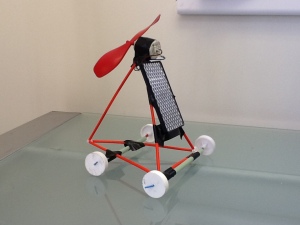The next Young Inventors class will be held at the Kimball Arts Center, Park City, Utah. Monday through Friday. April 9, 10, 11, 12, 13. 10:00 a.m.– 12:00 p.m. $150 (10% discount for members) materials included. (Ages 7 to 10). Register with the Kimball Arts Center.
Kids are naturally inventive and inquisitive. They also work in a different time frame to adults – so they think fast and move quickly. I think this is why childhood memories are of days that never seemed to end. Of course, we, as adults, also need to slow them down, at times, to help them better comprehend a project or task that they have been involved with. However, the “Time Warp” factor needs to be taken into account if one really wants to release “Kid Creativity”.
For young inventors the “Time Warp” presents a challenge for the senior inventors who are driven to share in the excitement of discovery with the kids that they might be, momentarily, responsible for. All of this translates down to providing all sorts of things that combine easily, quickly, and safely. So, for example, if the inventor theme for the day is, “vehicles,” then material for supportive frames, energy sources, motors, wheels, wings, and hulls, need to combine easily and in an open ended way. So such things as plastic coffee stirrers combined with short lengths of pipe cleaners (fuzzy sticks) make excellent lightweight support frames. When stronger support frames are needed balsa or harder woods, or plastics, can be combined with 90-degree angle brackets with nuts and bolts or even with electrical tape. Of the energy sources available for kids batteries are the most reliable and controllable but solar cells, balloons, and rubber bands, all have their advantages – long duration or speed, for example. Motors can be the simple 1.5 to 3 volt, DC motors, but they can also be wind-up, rubber band, or balloon motors – again each with their advantages. Wheels can be as light as those used for inexpensive balsa rubber powered planes or more durable, made of wooden wheels and rods from a craft shop… So, whatever the theme is for the day, the materials, engines, motors, chemicals, etc., need to combine easily and be open ended. Get this key thing right and kids will, almost literally, shoot for the moon.
Once a Young Inventor has created something they need to be challenged to make it make it function differently: fly faster, higher, slower, further, etc. It’s better to let kids create a number of items based on the day’s theme so they can see what the differences are between their creations – and this can, of course, involve practical math and science. Working in teams should be optional – it works for many but not all.




